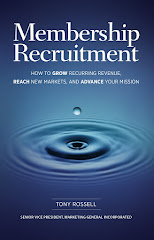
Is there such a thing as too much creativity?
A good marketer starts out a new project by asking the question, “What if?” What if we reach out to a new market? What if we make a special offer? What if we try a new marketing media channel?
However, when it comes down to implementing a program, the “what if” possibilities have to be balanced against “what if it does not work”. We are after all responsible for producing results and often our jobs, clients, or companies are depending on our sales.
Here are a few ideas on how to keep creative ideas flowing, but minimize the risk associated with launching them.
- It is unlikely that any of us will reinvent the wheel. Lot’s of great marketing ideas have been tried over the years. See if your new idea matches a successful program in some other industry. If someone else is doing the same type of promotion with success, then it may be a good indicator it is worth a try in your market. For example, associations can learn some creative membership renewal techniques from magazine publishers (and visa versa).
- Do an economics reality check to see if your creative idea is viable. If you normally get a 1% response rate, but need to get a 10% response rate to pay for your creative idea then think twice. As exciting as it might be, there is a reason why a 30 second Super Bowl commercial may not make sense economically for most professional or trade associations.
- Test your new idea. Good marketing is built on setting up statistically reliable tests to validate what method is superior by running a “test” (new creative idea) against the old reliable “control”. The single biggest mistake made by most marketers is too little testing of new ideas and concepts. Way back in 1923, Claude C. Hopkins, the father of direct marketing, wrote, “We learn the principles and prove them by repeated tests. This is done through keyed advertising by traced returns…We compare one way with many others, backward and forward, and record the results. When one method invariably proves best, that method becomes a fixed principle.”[1] Testing allows your members or customers to vote with their dollars on whether they like your new idea or not.
You will notice that I did not list standard research techniques as methods to validate your creative ideas. They can be used successfully. But remember, in marketing majority does NOT rule. If 90 percent of your prospective customers dislike your concept, but 10 percent love it and buy, you are a hero. So any research has to be careful of shooting down an idea that some economically viable segment of a market will support and buy.
What do you think? Feel free to add your comments.
[1] Claude C. Hopkins, Scientific Advertising (NTC Business Books, 1991).







No comments:
Post a Comment